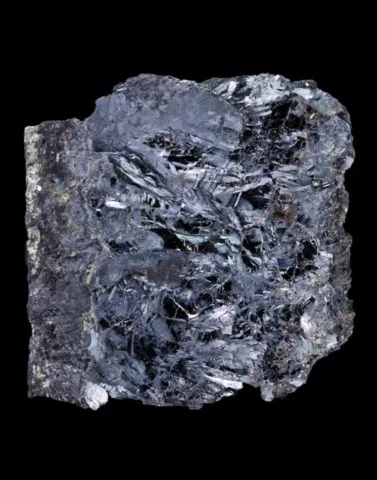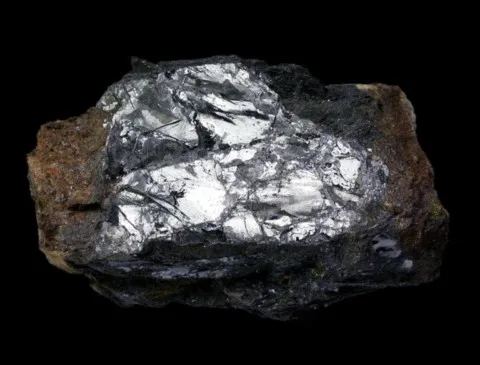TEALLITE
Class : Sulfides and sulfosalts
Subclass : Sulfides
Crystal system : Orthorhombic
Chemistry : PbSnS2
Rarity : Very rare
Teallite is an extremely rare lead and tin sulfide. It is one of those minerals called "Bolivian" because it was long known exclusively in Bolivian tin veins, where it accompanies cassiterite, pyrite, galena, stannite and often two other typical minerals : franckeite and cylindrite. It was named in honor of Jethro Justinian Harris Teall, Director of the Geological Survey of Great Britain and Ireland. Teallite forms elongated, flexuous, centimeter-sized lamellar crystals, quite similar to those of molybdenite, gray-black in color, commonly gathered in lamellar aggregates. It is a mineral that tarnishes in the air with the appearance of iridescence. It constitutes an important tin ore in several Bolivian mines.
Main photo : Teallite from Carguaicollo Mine, Potosi, Bolivia © Eugene & Sharon Cisneros
Teallite in the World
Twinning
Twinning is only observable in polished section.
Fakes and treatments
No fakes listed for this mineral species.
Hardness : 1.5 to 2
Density : 6.36
Fracture : Undetermined
Streak : Black
TP : Opaque
RI : -
Birefringence : -
Optical character : -
Pleochroism : None
Fluorescence : None
Solubility : -
Magnetism : NoneRadioactivity : None


